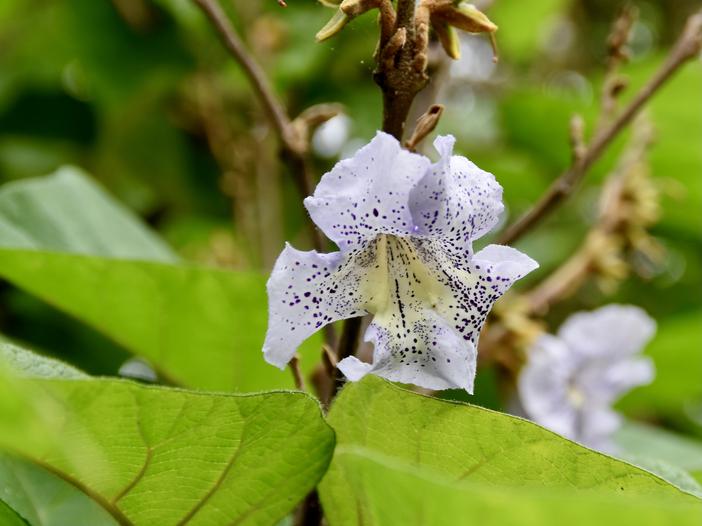Sapphire Dragon Tree
(Paulownia kawakamii)
Sapphire Dragon Tree (Paulownia kawakamii)
/
/

NasserHalaweh
CC BY-SA 4.0
Image By:
NasserHalaweh
Recorded By:
Copyright:
CC BY-SA 4.0
Copyright Notice:
Photo by: NasserHalaweh | License Type: CC BY-SA 4.0 | License URL: https://creativecommons.org/licenses/by-sa/4.0 | Uploader: NasserHalaweh | Publisher: Wikipedia Commons








Estimated Native Range
Summary
Paulownia kawakamii, commonly known as Sapphire Dragon Tree, is a deciduous tree native to mountainous regions and mixed forests of southern China and Taiwan. It can vary widely in size, typically growing to a height of 8-40 feet (2.4-12.2 meters) and a width of up to 30 feet (9 meters). The tree is recognized for its large, heart-shaped leaves and showy, fragrant violet or purple flowers that bloom in the spring before the foliage emerges, creating a dramatic display. The flowers are bell-shaped and arranged in upright panicles, which can be quite striking when the tree is in full bloom.
The Sapphire Dragon Tree is valued for its rapid growth and ornamental qualities, including its ability to provide quick shade and its spectacular floral display. It is commonly used as a specimen tree in parks and gardens and can also be utilized for reforestation projects due to its fast growth. This species prefers full sun but can tolerate light shade, requires medium amounts of water, and thrives in well-drained soils. While it is adaptable to various soil types, it performs best in fertile, loamy substrates. Despite its beauty, the tree can be invasive in some regions, such as Southern California, where it has naturalized in some areas. Gardeners should be aware of its potential to spread and consider local guidelines before planting.CC BY-SA 4.0
The Sapphire Dragon Tree is valued for its rapid growth and ornamental qualities, including its ability to provide quick shade and its spectacular floral display. It is commonly used as a specimen tree in parks and gardens and can also be utilized for reforestation projects due to its fast growth. This species prefers full sun but can tolerate light shade, requires medium amounts of water, and thrives in well-drained soils. While it is adaptable to various soil types, it performs best in fertile, loamy substrates. Despite its beauty, the tree can be invasive in some regions, such as Southern California, where it has naturalized in some areas. Gardeners should be aware of its potential to spread and consider local guidelines before planting.CC BY-SA 4.0
Plant Description
- Plant Type: Tree
- Height: 25-35 feet
- Width: 15-25 feet
- Growth Rate: Rapid
- Flower Color: Purple
- Flowering Season: Fall, Spring
- Leaf Retention: Deciduous
Growth Requirements
- Sun: Full Sun
- Water: Medium
- Drainage: Medium, Fast
Common Uses
Bee Garden, Bird Garden, Butterfly Garden, Fragrant, Hummingbird Garden, Low Maintenance, Showy Flowers
Natural Habitat
Mountainous regions and mixed forests of southern China and Taiwan
Other Names
Common Names: 白桐
Scientific Names: , Paulownia kawakamii, Paulownia viscosa, Paulownia thyrsoidea, Paulownia rehderiana,
GBIF Accepted Name: Paulownia kawakamii Ito